On this page, we’ll explore nine evergreen favorites perfect for clay soil, including rhododendrons, azaleas, holly, boxwood, yew, arborvitae, dogwood, berberis, and Siberian cypress.
Rhododendrons
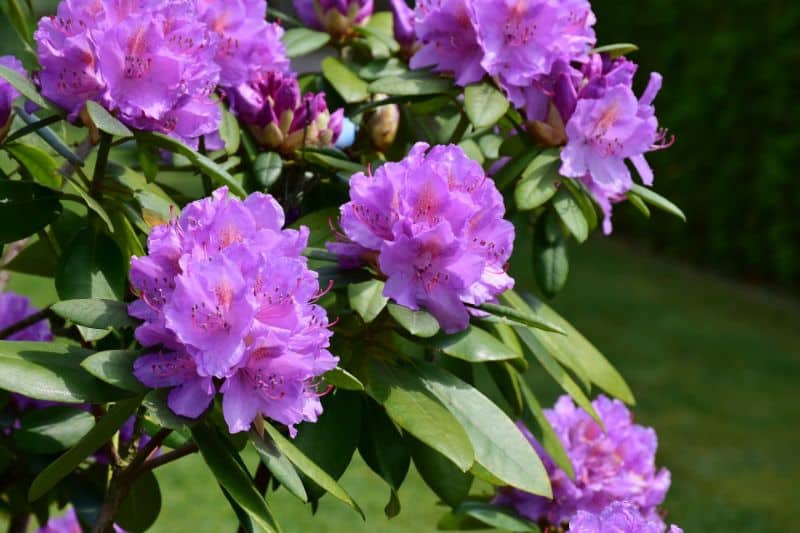
Rhododendrons are a classic choice for adding vibrancy to any landscape, and they are well-suited for clay soil. These evergreen shrubs come in various colors, sizes, and forms, making them incredibly versatile for garden design. Rhododendrons prefer slightly acidic soil, which can often be found in clay-heavy landscapes if you amend the soil properly.
When selecting rhododendrons for clay soils, consider varieties like ‘PJM’ or ‘Catawbiense.’ They show excellent adaptability and can tolerate the heavier texture of clay. These shrubs typically bloom in spring, showcasing large clusters of showy flowers. Furthermore, rhododendrons are relatively low-maintenance once established—requiring just occasional pruning to shape and remove dead wood.
To ensure they flourish, plant rhododendrons in areas that receive dappled sunlight to partial shade. It’s essential to prepare the planting site by amending the clay with organic matter like peat moss or well-rotted manure to enhance drainage and acidity. With their beautiful blooms and lush foliage, rhododendrons make a delightful addition to any clay soil garden.
Azaleas
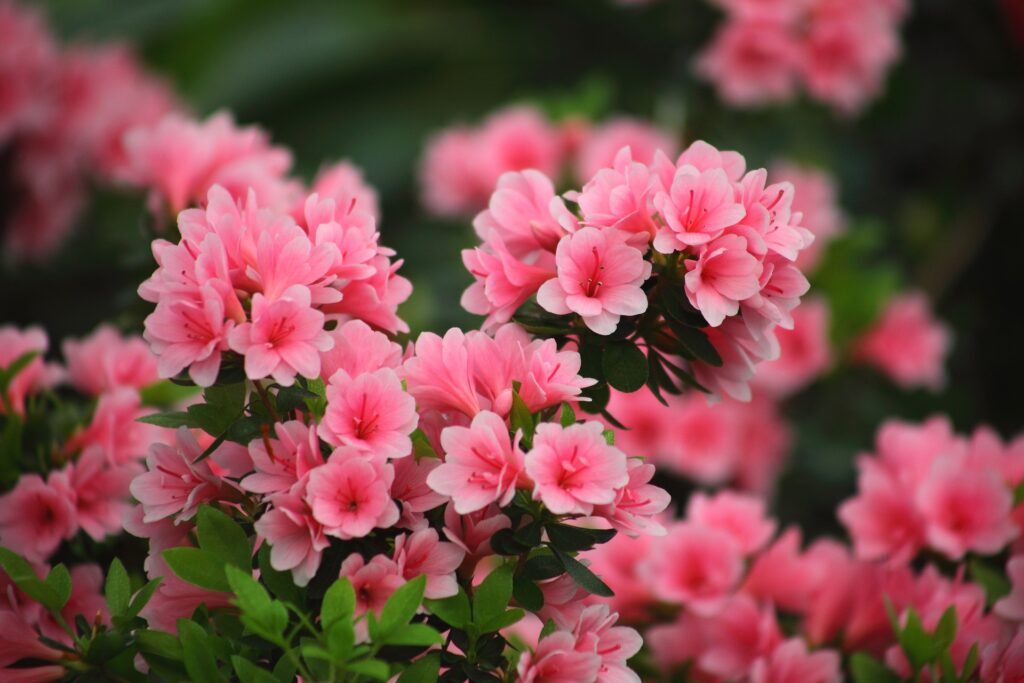
Closely related to rhododendrons, azaleas are another excellent evergreen choice for clay soil. Like their cousins, azaleas prefer slightly acidic conditions, making them suitable companions in many clay-heavy gardens. With a variety of colors and sizes available, azaleas can serve as both foundation plants and colorful accents in your landscape.
Popular azalea cultivars for clay soil include ‘Gable’s Grand’ and ‘Kaempferi.’ Both types are known for their hardiness and ability to thrive in less-than-ideal soil conditions. Azaleas are particularly stunning when they bloom in spring, featuring a wide array of hues that can brighten any shady corner of your yard.
To plant azaleas successfully in clay, ensure proper drainage by enriching the soil with organic matter. Dig a hole twice as wide as the root ball and slightly shallower than the root width to prevent water from pooling around the plant. Azaleas thrive in filtered sunlight, so consider planting them under the canopy of larger trees or in partially shaded spots to keep them happy and hydrated.
Holly
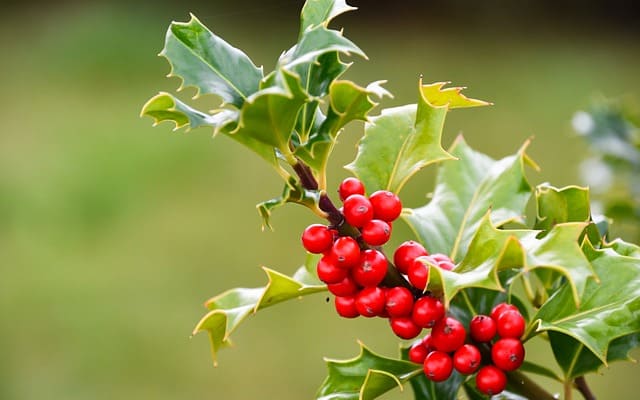
Hollies are a classic evergreen that brings year-round excitement to the landscape, earning their place among the best selections for clay soil. With their glossy leaves and bright red berries, hollies add a festive touch to your garden, especially during winter months when many plants lie dormant.
Several holly varieties, such as ‘Blue Prince’ and ‘Blue Princess,’ are particularly well-suited for clay conditions. These dwarf versions are excellent choices for hedges or foundation plantings. They are also dioecious, meaning that you’ll need a male and female plant for the females to produce berries.
Incorporating hollies into your landscape design involves selecting a location with full sun to partial shade. Package your hollies with well-draining organic material at planting to enhance moisture retention while preventing waterlogged roots. Besides being beautiful, hollies provide shelter and food for local wildlife, boosting biodiversity in your garden and offering an eco-friendly advantage.
Boxwood
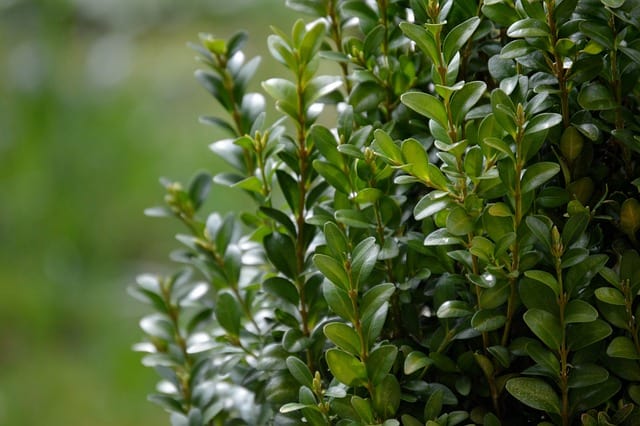
Boxwoods are evergreen shrubs famed for their versatility and longevity. Their dense, rounded foliage is a fantastic addition to any garden, and they adapt easily to clay soil, making them a popular choice for gardeners facing soil challenges. Boxwoods can be shaped and pruned to fit various landscaping styles, from traditional hedges to modern topiaries.
Varieties like ‘Winter Gem’ and ‘Green Velvet’ are ideal for clay conditions, adapting well with proper cultural practices like mulching and occasional pruning. They thrive in full sun to partial shade and appreciate some protection from harsh winter winds, which can cause browning on exposed foliage.
When planting boxwoods, improve the clay soil by incorporating compost to create a well-draining environment. Regular care includes watering during dry periods and applying a balanced fertilizer in spring. Their evergreen nature ensures they maintain their structure year-round, providing a formal backdrop to seasonal color changes in surrounding plants.
Yew
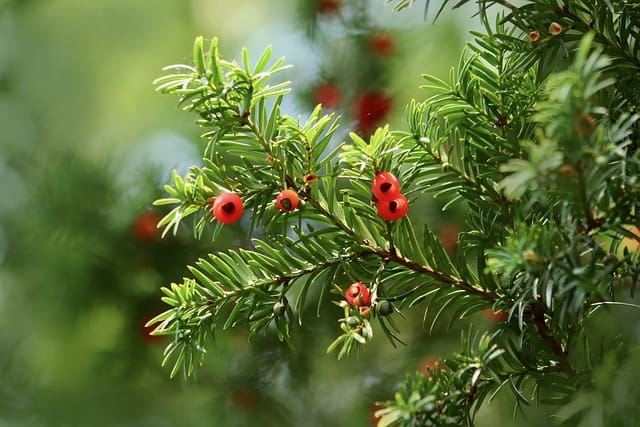
Yews are another evergreen option that excels in clay soils. These robust, coniferous shrubs can adapt to a wide range of soil types but find clay particularly amenable, especially when maintained properly. With their lush, deep green foliage and unique growth patterns, yews make a wonderful addition to any garden design.
Popular cultivars, such as ‘Densiformis’ and ‘Capitata,’ display compact growth and are suitable for smaller spaces. Yews are also tolerant of shade, making them perfect for planting under larger trees or in partially shaded areas of your yard.
To support yews in clay soil, amend the planting site with organic material to enhance drainage and prevent root rot. Ideally, place yews in locations where they receive filtered or dappled sunlight. Routine pruning will maintain their shape, and they can also be used for screening or privacy hedges because of their dense foliage.
Arborvitae
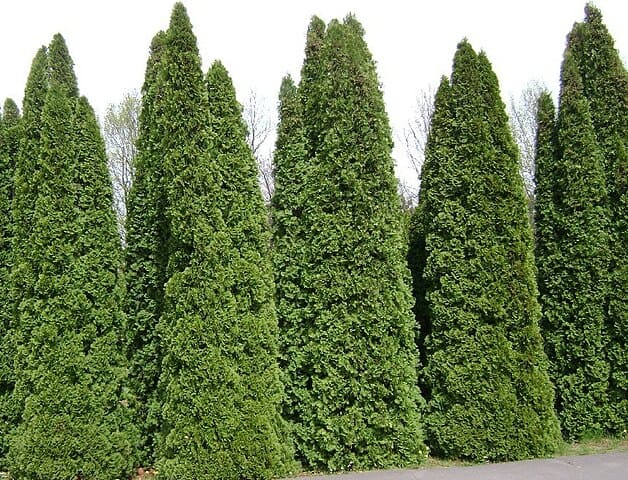
Arborvitae are another staple of evergreen gardening, known for their elegant and towering appearance. Most varieties thrive in clay soil, provided they have adequate drainage to avoid waterlogged roots. This makes them an excellent choice for creating privacy screens or windbreaks in your yard.
Choose varieties like ‘Emerald Green’ or ‘Techny,’ which offer versatile growing habits and are suited for various landscapes. These trees can grow quite tall with a narrow profile, making them ideal for vertical accents in your garden.
When planting arborvitae, it’s crucial to ensure that the container size matches the root ball. Furthermore, after planting, top the soil with a layer of mulch to help retain moisture while preventing weeds. These evergreen giants not only bring architectural beauty but also help to create natural habitats for local wildlife by providing shelter and cover.
Dogwood
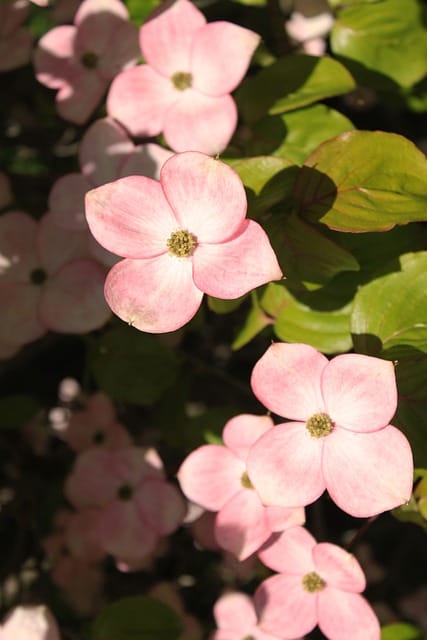
While dogwoods are often associated with deciduous varieties, some evergreen options exist, particularly the Pacific dogwood (Cornus nuttallii). This species thrives in clay soil, offering unique aesthetics and resilience. Known for their stunning blooms and vibrant Fall colors, dogwood trees add immense beauty to any landscape.
Planting dogwoods requires careful consideration of soil quality. Although they prefer moist, well-drained soil, working with clay can yield beautiful results if mixed with organic matter. Dogwoods enjoy partial to full sunlight; however, they prefer protection from extreme heat and dryness.
With their lovely flowers and unique branching structure, dogwoods serve as excellent focal points in landscaping. Make sure to prune selectively after blooming to maintain their shape and health while keeping an eye out for any signs of disease, as healthy plants contribute to a thriving garden ecosystem.
Berberis
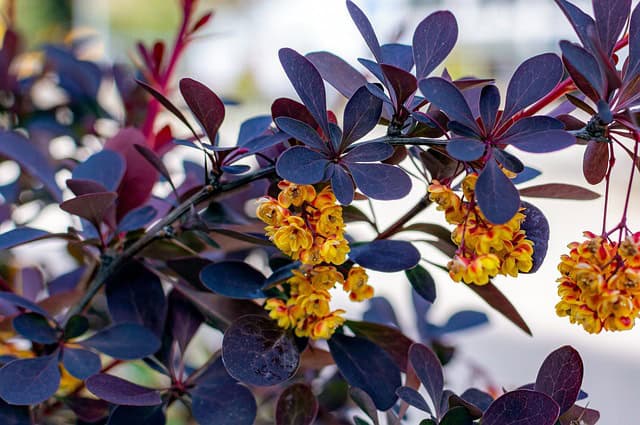
Berberis, or barberry, is a lesser-known evergreen shrub that brings unique color and texture to the garden. With spiny, drought-tolerant characteristics, some varieties of barberry can withstand the challenging conditions of clay soils. They are particularly valued for their vibrant foliage, which can vary in shades from green to deep burgundy.
Popular barberry cultivars for clay soil include ‘Admiration’ and ‘Golden Pillar,’ both of which thrive in well-drained clay. Barberry is also incredibly low-maintenance and can tolerate full sun and shade, making it a flexible choice for any garden design.
To foster good growth, amend clay soil with organic matter at planting to establish a well-draining base. Barberries typically do not require extensive pruning, but removing any dead or damaged branches will promote healthy growth. Their vibrant colors and unique shape add ornamental value while providing a well-structured backbone to your garden.
Siberian Cypress (Microbiota decussata)
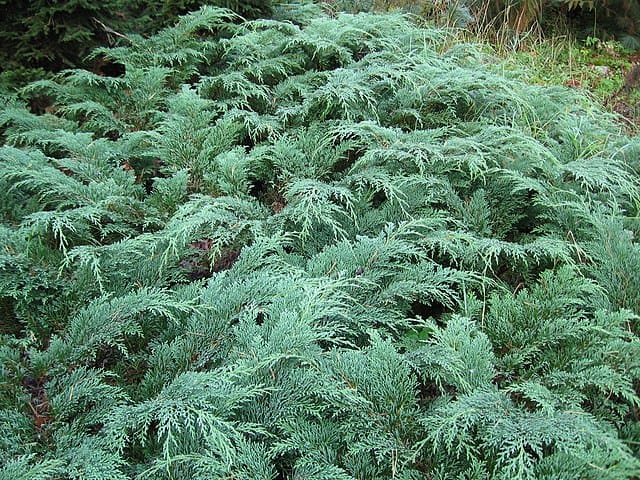
Siberian Cypress, often referred to as Microbiota, is a deceivingly tough evergreen groundcover that thrives in clay soil. This unique plant offers a sprawling growth habit and can create a vibrant carpet of lush green foliage, making it an excellent choice for erosion control on slopes or as an alternative to traditional grass lawns.
With its adaptability and resilience, Siberian Cypress can tolerate both clay and sandy soils, although the former helps to retain moisture better. When designing your landscape, consider placing Microbiota in sun-drenched areas, although it will also tolerate partial shade.
Planting Siberian Cypress involves preparing the soil and ensuring good drainage, particularly when working with clay. A generous layer of mulch can support growth while helping to suppress weeds. With its evergreen character and low-maintenance needs, Siberian Cypress is an ideal choice for those seeking to diversify their garden while managing clay soil challenges.
Conclusion
Gardening in clay soil doesn’t have to be a barrier to cultivating a vibrant landscape. The evergreens covered in this blog post—rhododendrons, azaleas, hollies, boxwoods, yews, arborvitae, dogwoods, berberis, and Siberian cypress—show that there are numerous beautiful and adaptive choices available for your needs.





